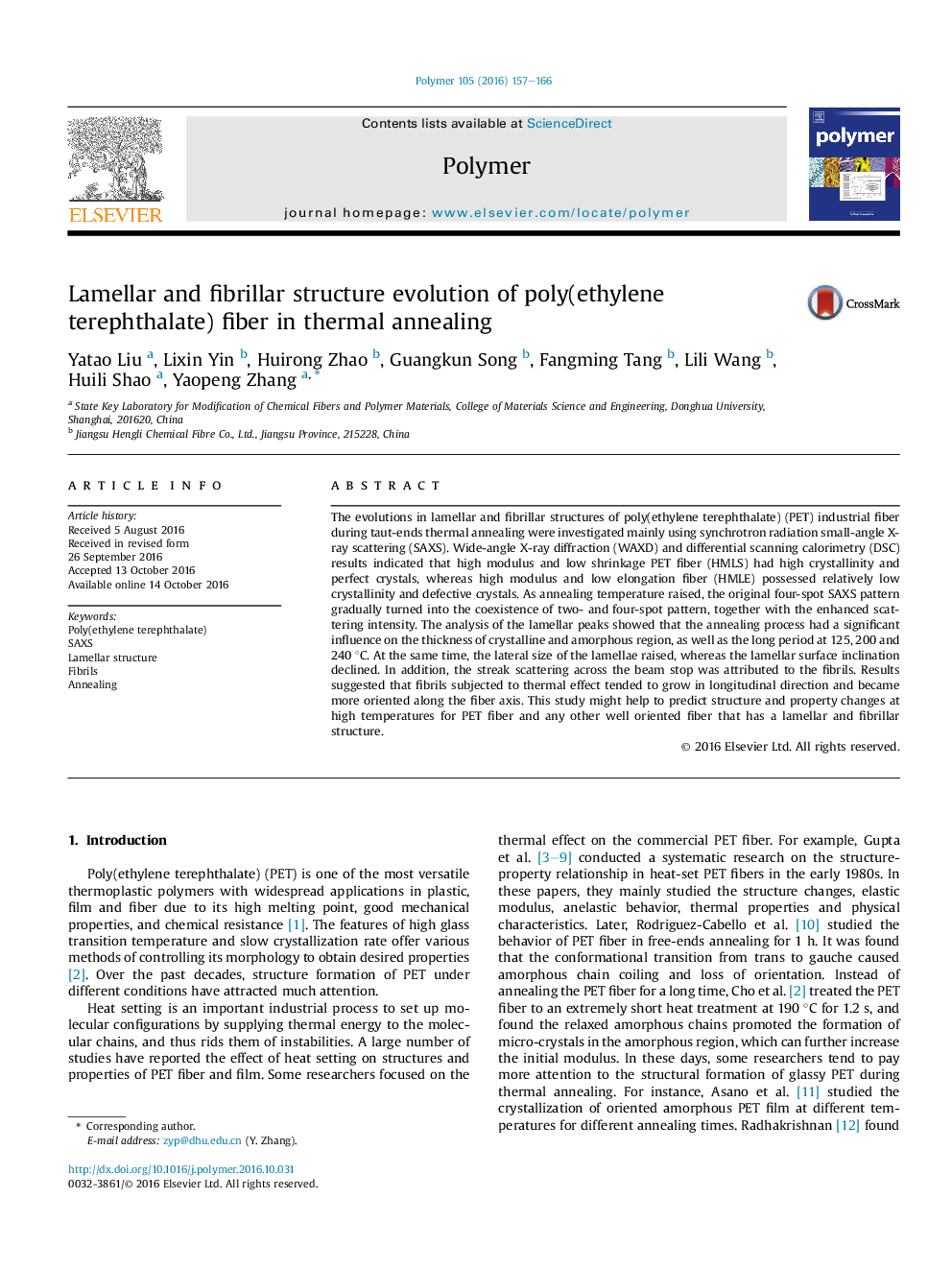| کد مقاله | کد نشریه | سال انتشار | مقاله انگلیسی | نسخه تمام متن |
|---|---|---|---|---|
| 5178857 | 1502501 | 2016 | 10 صفحه PDF | دانلود رایگان |
- Synchrotron radiation SAXS was mainly performed on two types of PET industrial fiber.
- The evolution in lamellar and fibrillar structures of PET fibers in thermal annealing is presented.
- Structure-property-process relationship of PET fibers is investigated.
- Annealing significantly improves the structures of PET fiber with small and defective crystals.
The evolutions in lamellar and fibrillar structures of poly(ethylene terephthalate) (PET) industrial fiber during taut-ends thermal annealing were investigated mainly using synchrotron radiation small-angle X-ray scattering (SAXS). Wide-angle X-ray diffraction (WAXD) and differential scanning calorimetry (DSC) results indicated that high modulus and low shrinkage PET fiber (HMLS) had high crystallinity and perfect crystals, whereas high modulus and low elongation fiber (HMLE) possessed relatively low crystallinity and defective crystals. As annealing temperature raised, the original four-spot SAXS pattern gradually turned into the coexistence of two- and four-spot pattern, together with the enhanced scattering intensity. The analysis of the lamellar peaks showed that the annealing process had a significant influence on the thickness of crystalline and amorphous region, as well as the long period at 125, 200 and 240 °C. At the same time, the lateral size of the lamellae raised, whereas the lamellar surface inclination declined. In addition, the streak scattering across the beam stop was attributed to the fibrils. Results suggested that fibrils subjected to thermal effect tended to grow in longitudinal direction and became more oriented along the fiber axis. This study might help to predict structure and property changes at high temperatures for PET fiber and any other well oriented fiber that has a lamellar and fibrillar structure.
432
Journal: Polymer - Volume 105, 22 November 2016, Pages 157-166
